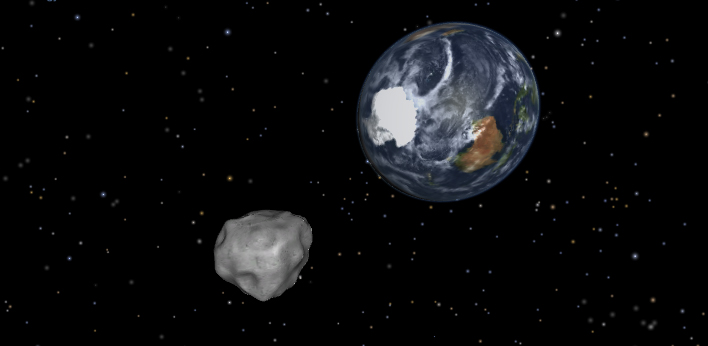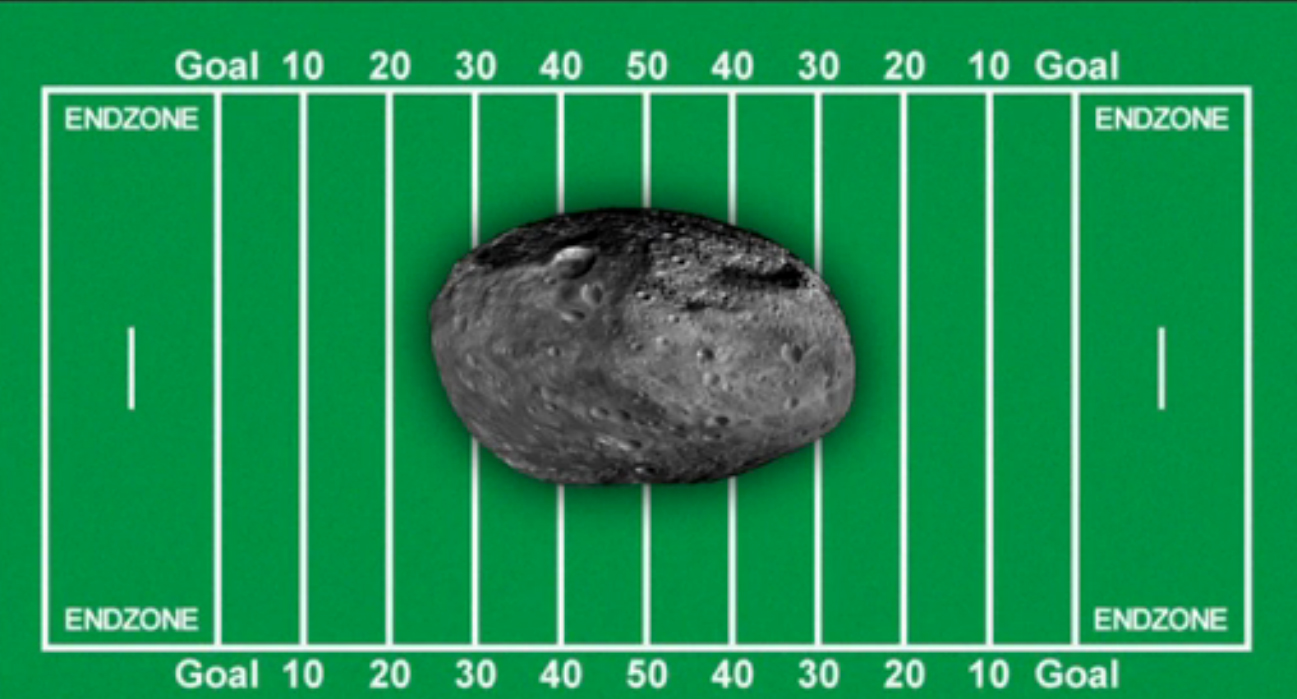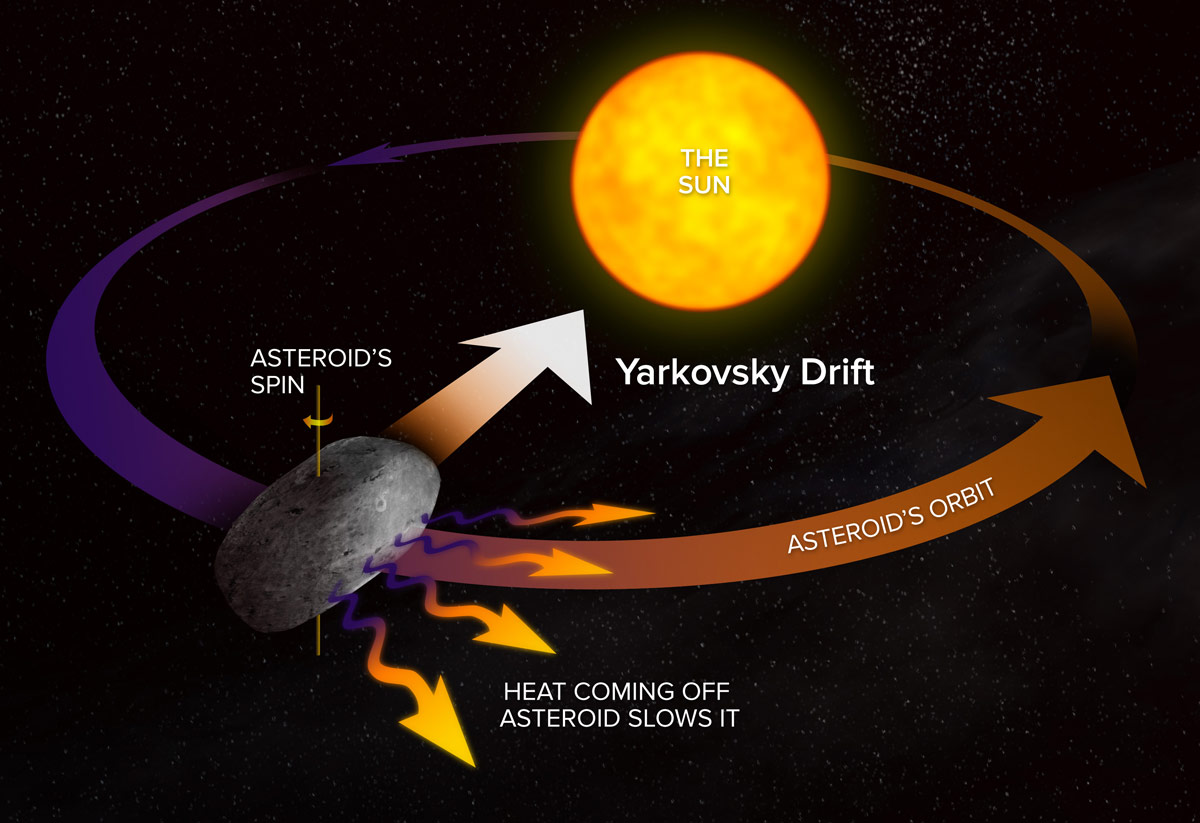150-Foot Asteroid Has Close Encounter with Earth This Week

An asteroid half the size of a football field will buzz close by Earth on Friday, coming closer than many communications satellites, but there is absolutely no chance the space rock will hit the planet, NASA says.
The asteroid 2012 DA14 will approach within 17,200 miles (27,000 kilometers) of Earth when it zips by the planet on Friday (Feb. 15). It will be 5,000 miles closer than the communications satellites that orbit the Earth, but it poses no impact threat, NASA scientists assured.

According to detailed observations of the 150-foot (45 meters) 2012 DA14 since its discovery last year, "there is no chance that the asteroid might be on a collision course with Earth," NASA officials said in a statement.
But the space rock encounter will mark the closest-ever known Earth flyby of an asteroid the size of 2012 DA14, with NASA scientists and astronomers around the world preparing to take advantage of the event to take a close look at how asteroids work.
One study in particular seeks to pin down exactly how the asteroid spins.
"Knowing the direction of spin is essential to accurately predicting its future path, and thus determining just how close it will get to Earth in the coming years," study team member Michael Busch of the National Radio Astronomy Observatory (NRAO) said in a statement.
Busch and his colleagues will use two huge radio telescopes in New Mexico, the Very Large Array and Very Long Baseline Array, along with NASA's Goldstone radar antenna in California in an attempt to determine the direction of asteroid 2012 DA's spin.
Get the Space.com Newsletter
Breaking space news, the latest updates on rocket launches, skywatching events and more!
The telescopes seek out so-called "speckles" in the radio signals reflected by the asteroid's uneven surface, and then compare which observatory detected the speckles first in order to determine the spin direction.
Knowing an asteroid's spin is key to understanding how a space rock radiates heat from absorbed sunlight over time. That, in turn, can allow astronomers to project how an asteroid's orbit can change over long periods as it circles the sun.
Asteroids, like Earth, have a warmest part of their day, during which time they develop a hotspot that can be observed in infrared light. Later, the asteroid emits the absorbed radiation back out into space, which can serve as a gentle — but firm — jet-like push, researchers said.

The phenomenon is called the "Yarkovsky effect" after the 19th-century Russian engineer I.O. Yarkovsky, who first identified it.
"When the asteroid passes close to the Earth or another large body, its orbit can be changed quickly by the gravitational effect of the larger body, but the Yarkovsky Effect, though smaller, is at work all the time," Busch said.
Asteroid 2012 DA14 was discovered in 2012 by astronomers with the La Sagra Sky Survey at the Astronomical Observatory of Mallorca in Spain. The asteroid will make its closest approach to Earth at 2:24 p.m. EST (1924 GMT) Friday, at which time it may be visible in telescopes and binoculars to observers in Asia, Australia and Europe, where the local time will be nighttime.
Visit SPACE.com each day this week for complete coverage of asteroid 2012 DA14 and its Earth flyby.

This story was corrected to reflect that astronomer Michael Busch is a study team member, not lead, and that asteroid 2012 DA14 flew closer to Earth than communications satellites, not geosynchronous satellites.
You can follow SPACE.com Managing Editor Tariq Malik on Twitter @tariqjmalik. Follow SPACE.com on Twitter @Spacedotcom. We're also on Facebook & Google+.
Join our Space Forums to keep talking space on the latest missions, night sky and more! And if you have a news tip, correction or comment, let us know at: community@space.com.

Tariq is the Editor-in-Chief of Space.com and joined the team in 2001, first as an intern and staff writer, and later as an editor. He covers human spaceflight, exploration and space science, as well as skywatching and entertainment. He became Space.com's Managing Editor in 2009 and Editor-in-Chief in 2019. Before joining Space.com, Tariq was a staff reporter for The Los Angeles Times covering education and city beats in La Habra, Fullerton and Huntington Beach. In October 2022, Tariq received the Harry Kolcum Award for excellence in space reporting from the National Space Club Florida Committee. He is also an Eagle Scout (yes, he has the Space Exploration merit badge) and went to Space Camp four times as a kid and a fifth time as an adult. He has journalism degrees from the University of Southern California and New York University. You can find Tariq at Space.com and as the co-host to the This Week In Space podcast with space historian Rod Pyle on the TWiT network. To see his latest project, you can follow Tariq on Twitter @tariqjmalik.









